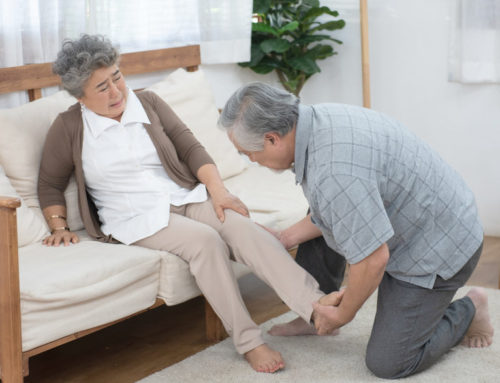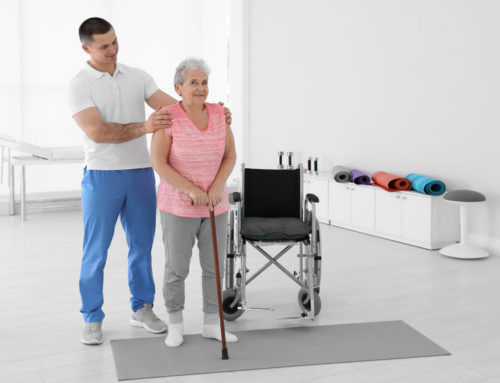Share This Story!
Strokes Are Preventable
Strokes are the fifth leading cause of death among Americans. People over 55 years or older are at higher risk of suffering from a stroke. During a stroke, blood flow in the brain gets cut off or blood vessels burst depriving cells of oxygen and causing permanent memory, speech, or movement loss. Fortunately, 80% of strokes are preventable if signs are quickly recognized using the acronym FAST.
Act FAST
FAST can help people nearby identify the early signs of a stroke and call for medical help immediately. The faster the stroke sufferer can get to the hospital, the better. Every minute that passes deprives the brain of oxygen losing millions of neurons. Four simple letters can be the difference between life and death.
Face
Blood loss in the brain can cause weakness in the body and face making the face appear lopsided or uneven. If a person displays these signs, ask the person to smile and look for any facial drooping.
Arms
Strokes can cause weakness in the body making one side drift downward. Individuals who experience a stroke may not even notice or be completely conscious. If one side of the body looks tilted down, ask the person to raise both arms to check for body weakness.
Speech
Strokes can affect the area of the brain that regulates speech. Ask the person to repeat an easy phrase to check for any slurring, strange words, or confusion.
Time
Time is of the essence when dealing with signs of a stroke. Call 9-1-1 immediately to avoid permanent brain damage and ensure a speedy recovery.
What’s the hurry?
Stopping the bleeding as soon as possible is imperative. A powerful medication called tissue plasmogen activator (tPA) can effectively bust clots, but must be administered within 3 hours of the start of the stroke. Other treatment options are available to reduce further damage after the 3-hour window or for patients who can’t take tPA.
Other stroke symptoms
FAST can be an easy way to remember the proper course of action when witnessing the first signs of a stroke, but there are more symptoms that can appear. Stroke sufferers may notice sudden numbness, prickling sensation, confusion, vision problems, dizziness, or headaches. Onlookers should keep note of the time of the first symptom.
Aging increases stroke risk
As people age, vulnerability to suffering a transient ischemic attack (TIA) increases. A TIA is a short-lived stroke that produces the same symptoms but goes away after 24 hours. TIAs are often a warning sign for an impending stroke. Up to 40% of people who have had a TIA have a stroke.
Stroke prevention
In addition to learning how to recognize a stroke FAST, people should focus on prevention to reduce risk of permanent movement, speech, or memory loss. People can take active steps to quit smoking, eat healthier, exercise more often, and take prescribed medications to ease the symptoms and prevent further harm.





